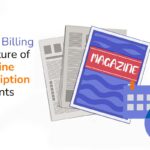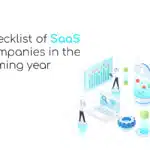
Best Billing Software in 2025: Paddle vs Stripe vs SubscriptionFlow
Let’s understand the ground reality of the world of SaaS in 2025 before delving deeper into the heart of the blog i.e. a thorough comparison of Paddle vs Stripe. One thing that we have observed becoming an increasing reality in the world of SaaS is that customers have been demanding subscription solutions that are ever more customizable and scalable. The market for SaaS is saturated. A way for businesses to stand out amongst such stiff competition is to offer extremely diverse services and billing options to their end consumers.
Now, let us take a quick overview of other factors that have contributed to changes in what businesses now demand from their billing management software:
1. Increased demand for scalable and customizable subscription solutions.
2. Growing demand for global operations via the management of multiple currencies, tax-related regulations, and other region-specific complications.
3. Especially now with the percolation of AI into the market, it has become indispensably crucial for subscription-management software to provide important insights into metrics like ARR, churn rates, etc.
Paddle vs Stripe vs SubscriptionFlow at a Glance
All subscription and billing management software today keeps these three aforementioned factors in mind when designing their own services. They know what the user wants and that is what they will keep in mind when tailoring what they offer. Additionally, it’s important to consider the benefits of using utility billing management software. To really get into a thorough Paddle vs Stripe vs SubscriptionFlow breakdown, lets take a look at each of these software separately and understand their strengths and weaknesses in the market.
Understanding Stripe
Stripe remains a solid platform for those looking for services related to subscription and billing management in 2025. It has built its formidable reputation on offering businesses the option of differently tiered pricing and the ease of integration of its API with existing workflows.
Here is a brief review of Stripe and some of its features in 2025 to better help you understand it:
1. Pricing
Unlike many other subscription management systems, Stripe follows a pay-as-you-go model that is coupled with it charging 2.9% + 30 cents for every successful transaction that is made domestically in the US. (Charges vary across geographies, and sometimes even within a single economic market like that of the European Union.)
2. Global Reach
Stripe operates in over 130 countries and territories in the world, making it one of the most global options in the market out there. In addition to the sheer expanse of territories that it covers, Stripe also offers payment processing capabilities in all the countries it operates in, alongside adhesion to their local payment laws and tax regulations.
3. Experience by Existing Users
Of all the things Stripe is noted for, it is most prized amongst its users for its ease of use and its customizability. These are features that are of paramount importance for any business looking for its subscription needs to be met.
Why are People on the Lookout for Alternatives to Stripe?
Despite Stripe being a market leader, there are a few reasons why businesses are on the lookout for alternatives to Stripe. The reasons are as follows:
1. High Transaction Fee
Many do not like the high transaction fee Stripe has and look for both alternative payment gateways that charge a smaller fee and subscription management systems that offer the ease of integration with these cheaper payment gateways.
2. Difficult to Navigate
Users have also reported that find Stripe a little befuddling to use, especially considering the plethora of options that it has. For those with lesser needs and looking for simpler solutions, it might be better to look elsewhere.
3. Problematic Customer Support
Users looking for customer support that is more personalized is also touted as a reason why some users have flocked away from Stripe in recent years. Many want a better customer support service that other alternatives can offer.
4. Not as Localized
Stripe is also extremely region-dependent, as some of its features are not available in certain geographies. In such a situation, especially if the missing features are especially desirable ones for the users, it may be wise to look elsewhere for other, perhaps more localized options (like Peach Payments for users specifically in South Africa).
Understanding Paddle
Unlike Stripe, Paddle is more of an all-rounder. This is why it is preferred by those who are looking for a one-stop solution for all their needs.
Here is a brief review of Paddle and some of its features in 2025 to better help you understand it:
1. Pricing
Coming in at a steep 5% in addition to a whopping 50 cents per transaction, Paddle is clearly more expensive than Stripe. This is why it is only beneficial for those businesses with really deep pockets who are looking for an all-rounder solution to their billing and subscription needs.
2. Global Reach
Paddle beats Stripe here as well as it offers services in more than 200 countries and/or territories, clearly beating Stripe’s 130. And similar to Stripe, Paddle also is able to sufficiently handle all the tax compliances in these places in addition to any other local laws.
Yet what may be by far the most exciting thing about Paddle is that it offers its services in more than 30 languages, which is near the top end of all subscription management service providers.
3. Customer Review
The thing that has stood out the most in those customers reviewing Paddle in 2025 has been its masterful handling of sales tax in a lot of its offered geographies, making it a top-choice for retail businesses and other online stores that are selling items regularly to their end consumers. And Paddle seems to have realized their specialty hit amongst their users. It also offers the option of recovery during checkout and various other protections, such as chargeback protection. This, in addition to the generally secure experience that Paddle offers, makes the high fee it charges quite worth the while for those businesses looking to offer the securest possible service to their consumers.
Why are People on the Lookout for Alternatives to Paddle?
Despite Paddle having captured the market in a big way, there are a few reasons why businesses are on the lookout for alternatives to Paddle. The reasons are as follows:
1. Very High Transaction Fee
Paddle is even more expensive than Stripe. Admittedly, while the cost between the two may amount to being more or less the same once you integrate Stripe Billing with Stripe’s payment gateway services, Paddle does not offer you the choice to break these two down, which is what makes it a good option for only those businesses who need both these services (of a payment gateway and a billing management system) in one.
2. Not Adept for Businesses That Are Still Growing
Paddle is great for established businesses, but much less so for those that are still growing and finding their footing in the market. For such businesses, it may better to look for other alternatives (like SubscriptionFlow—more on that later!)
3. A Complicated Array of Features:
While the endless list of features that Paddle offers is great, for some businesses it may not only be unnecessary but also a logistical quagmire that they have to wade through every time they use the software. These businesses should look for cleaner and simpler options.
Why SubscriptionFlow Is Just the Right Alternative for Those Looking to Flock Away from Paddle and Stripe
By far the biggest selling point that SubscriptionFlow has over Paddle and Stripe is that it offers a lot of the same functionalities at a much, much discounted price. Let us dig into some of the other features as well that make it an especially attractive alternative:
1. Excellent Customer Care
SubscriptionFlow offers robust customer care services that are kept running by trained professionals who not only know how to expertly deal with callers from around the globe, but are also equipped with the necessary technical knowledge to understand the complaints and find innovative solutions to them.
2. The Price
At just $99 a month, SubscriptionFlow is a great option for some of the more budget-conscious businesses that are on the lookout for options that will not break the bank. And since SubscriptionFlow offers a free demo, you can always just book a demo with the team and see for yourself if you like the functionalities being offered without shelling out even a single cent!
3. Robust Customization without Crowding the Dashboard
While it is true that SubscriptionFlow offers a lot of customization options (just like Paddle and Stripe), it does not let those features crowd the dashboard in any way, which is why the software is such a hit for growing businesses that are only slowly acquiring the technical knowledge of mastering all the features that software like SubscriptionFlow offer.
Keeping the concerns of these growing businesses in mind, SubscriptionFlow’s user interface has been deliberately designed to ensure that a beginner does not feel overloaded with options and customizations that they probably do not even need at that given point.
The Bottom Line
All in all, SubscriptionFlow emerges as a worthy alternative to Paddle vs. Stripe Billing due to two main factors: its lesser cost and endless array of features. Book a demo with SubscriptionFlow now to see for yourself the functionalities of this great software that is on the rise in the world of SaaS. Book a demo with SubscriptionFlow now!














